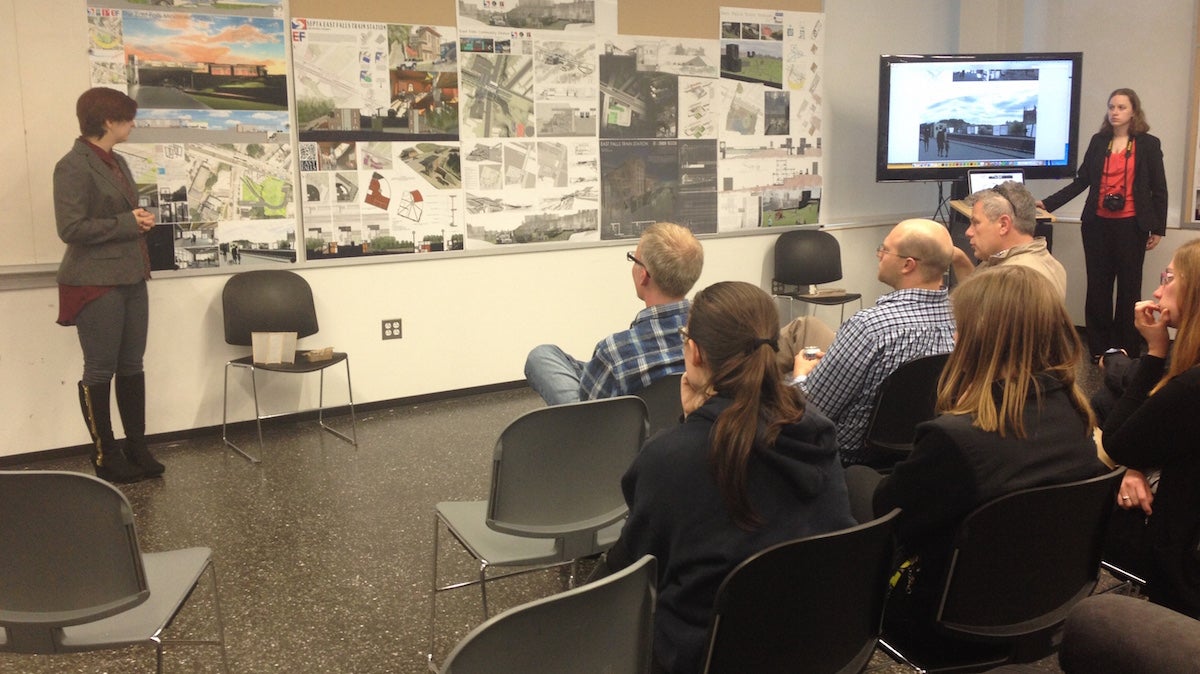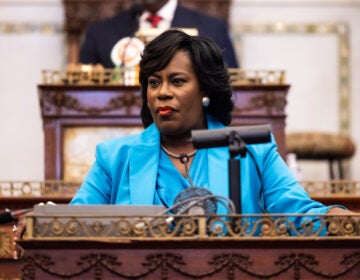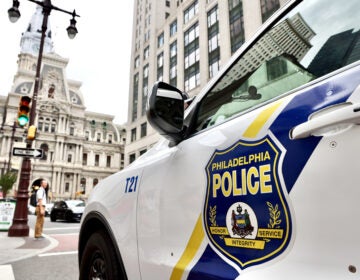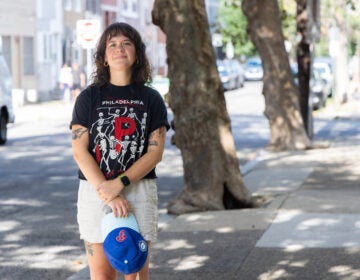Philadelphia U. students pitch ideas for revamped East Falls SEPTA station

(John Corrigan/for NewsWorks)
Imagine going to the train station and shopping for groceries, grabbing a bite and squeezing in a quick workout, all before heading to work.
It’s possible, says Jakob Noon, one of the 15 Philadelphia University architecture seniors whose semester-long project was to redesign SEPTA’s East Falls station, a stop on the Manayunk/Norristown line. Noon’s concept, the “East Falls Station and Wellness Center,” houses a gym, grocery store and café next to the train tracks.
“We want to encourage the community to live a healthier lifestyle,” Noon said.
That’s all well and good, replied Warren Williams, SEPTA’s project architect, but he had one question.
“Where’s my station? I’ve got to have a bigger station, a bigger presence. There may be a railroad station behind the retail space somewhere, but getting there is not at all intuitive,” Williams said.
Students presented their final designs to SEPTA officials, professional architects, university alumni and members of the East Falls Development Corporation earlier this month. It was just one conversation in a dialogue that’s been ongoing for the better part of a decade as East Falls residents have petitioned for SEPTA to redesign the station, burned down in 1982, which has since consisted of a trailer and a pair of platforms.
“We want the redesign to have the best things for the neighborhood,” said Gina Snyder, executive director of the EFDC. Snyder reached out to Philadelphia University last year to see if the school was interested in having students map out design plans for the station. It was so successful in a brief course that Snyder reached out to Professor David Kratzer again to see if his soon-to-be graduates would be interested.
And then SEPTA came on board.
“Like every large organization, we get used to a certain way of doing things,” Williams said. “It’s not cookie-cutter, but we’re constrained by money and functionality. So this is an exciting way to challenge our ideas and status quo.”
Williams says the main issue with the redesign, which is expected to begin within the next three to five years, is fulfilling Americans with Disabilities Act requirements. All of the high-level platforms must increase four feet in height, and that rise will require at least 40 feet of ramp.
“It’s a very difficult challenge for this site in particular, because it runs on such a small piece of land,” Williams said.
An extra layer to the project was that students had to consider the future, specifically 2041, when they’ll be celebrating their 25th reunion.
“It’s really great to see the students get involved in that kind of context, where they understand design as being a result of a collaborative project,” Kratzer said. “That’s a rare thing for students to get in academia.”
The architecture majors, along with two occupational therapy majors, faced the challenge with strategic planning and innovative concepts, incorporating SEPTA’s regulations and the East Falls community’s desire for commercial activity. Jessica Martin featured a sandwich shop in her design, accommodating residents’ wishes for a kiosk serving food and coffee.
“We’ve never worked directly with a client before,” Martin said. “It was interesting meeting with all parties involved and trying to be the mediator.”
Matt Imperato added a beer garden and used timber frame construction to complement the Tudor style architecture of East Falls.
“My goal was to anticipate what the future might bring in terms of transit technology while still holding on to the history of East Falls,” Imperato said.
The problem with pretty much all of the plans, Williams says, is the lack of parking. That’s not a concern in areas such as Chestnut Hill and Mt. Airy where people generally walk to the train stations, but it is for most other stations.
“The ridership is directly geared to how much parking we’ve got,” Williams said. .
An engineering class at Widener University did a similar project, redesigning the Marcus Hook station on SEPTA’s Wilmington/Newark Regional (commuter) Rail line. Williams said the students approached the project by doing everything by the book, using budget analysis, phasing, and scheduling to design a completely practical station under SEPTA’s regulations.
“There is nothing wrong with that, but this one is a lot more fun,” Williams said.
“It’s not so much that SEPTA will take our idea and implement it,” Martin said. “It’s more that instead of designing the generic SEPTA station maybe our project will get them to think of other things.”
Snyder plans on holding an open house and reception party in East Falls for residents to look over the project designs and offer feedback. “My design committee will then take all of the projects and look for valuable nuggets that are worth pushing SEPTA to use,” Snyder said.
WHYY is your source for fact-based, in-depth journalism and information. As a nonprofit organization, we rely on financial support from readers like you. Please give today.




